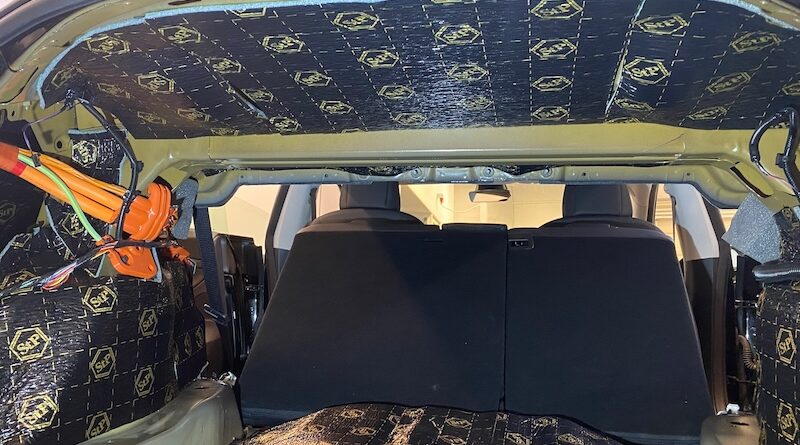Soundproofing An Older Tesla Model 3
In my recent article about reaching 100,000 miles in my 2019 Tesla Model 3, I mentioned how I got it acoustic dampened professionally. With so many used Model 3s being available on the market today, I thought it would be appropriate to update the article from February 2021 and run it one more time. Let me remind you that soundproofing can be a very subjective thing. Your driving environment, tires, surface, speed, and even hearing capacity can greatly influence the end result. However, I felt the difference instantly, and I am happy that I had it done relatively early on, in order to enjoy it for longer.
The principle of acoustic attenuation is a measure of the energy loss of sound propagation in a given media. When sound propagates in a media, there is always thermal consumption of energy caused by the specific viscosity of that media. When soundproofing a car, the energy loss of vibrations originating from outside influence is exactly what we want in order to improve the acoustic comfort on the inside. The following contains a lot of photos to provide as much detail as possible for anyone who plans to do this.
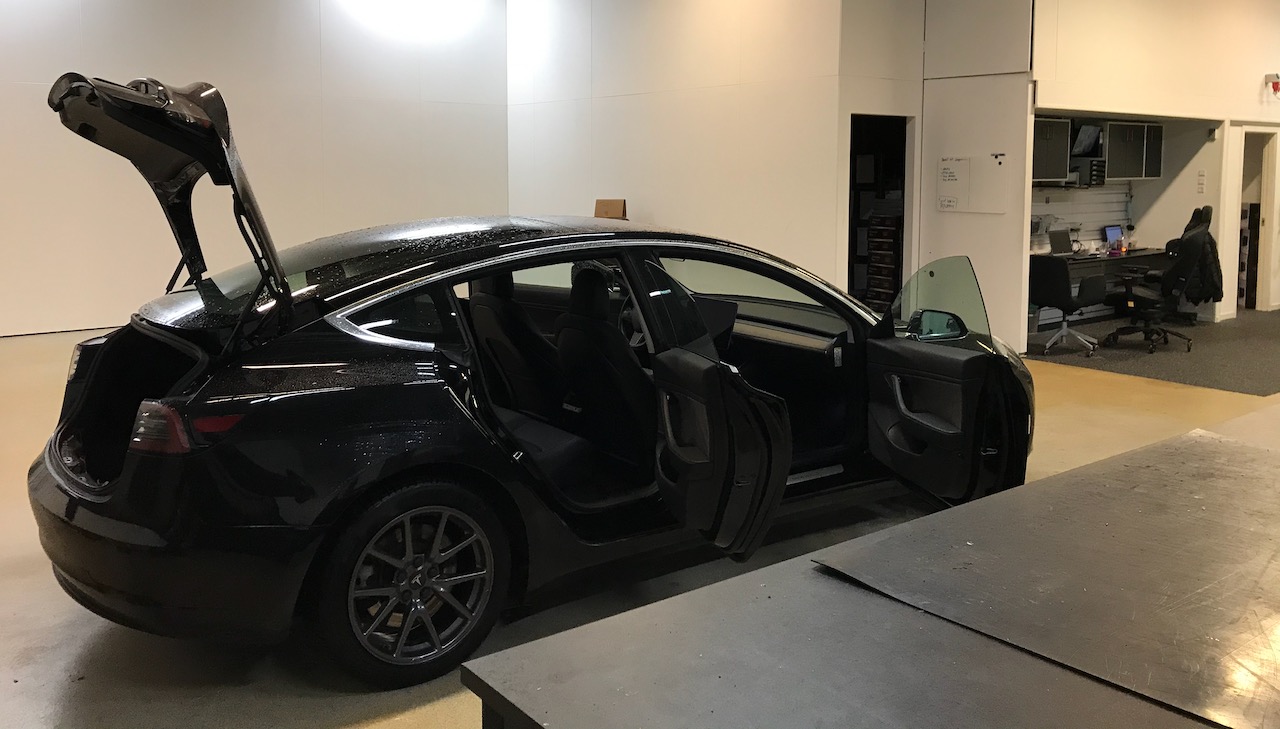
When I was to have my Tesla Model 3 delivered, there were some challenges, and I ended up driving a loaner Model S for two weeks before I could pick up my own car. I drove about 600 very comfortable miles in the Model S, and when I picked up the Model 3, I was not surprised that the level of comfort decreased slightly, mostly in terms of road and wind noise, and smoothness of the suspension (the Model S had air suspension). After all, my new car was about half the price, so this was to be expected.
At first, I didn’t think much of it, primarily because the sound system in the Model 3 was so much better than in the Model S. I had opted for the premium version with the subwoofer, and I personally have never experience higher fidelity in a passenger car before. So, needless to say, I was happy as could be and enjoyed my Model 3 to its full extent. The new Model 3 is said to have an even better sound system built in, on top of a much better soundproofing overall. My daughter has tried the new Model 3, and her being used to ours, she says it’s unreal how good it is in comparison!
At the time my son had just bought a used top-of-the-line 2004 Volvo S40 with a silky smooth 5 cylinder engine, full leather interior, and premium sound system. Driving along with him, I noticed that the acoustic comfort inside at normal highway speed seemed better than my Model 3! What? Impossible. But no, we strained our perceptions and even simple decibel measuring apps would suggest the noise levels were lower in the Volvo. It does have narrower tires, though, so maybe that was the main reason. Maybe not.
It’s important to note here that the gasoline-fed inline 5-cylinder internal combustion engine in the Volvo S40 gets a power stroke every 144 degrees with overlap as opposed to the power strokes of an inline 4-cylinder engine every 180 degrees with no overlap. Because the power strokes have less downtime in a 5-cylinder engine, it runs more smoothly than a 4-cylinder engine, but only at limited mid-range speeds. 2nd and 3rd-order vibrations increase as revs go up due to the inherent total imbalance of the 5-cylinder setup. This is why the 5-cylinder can feel so engaging. It can be silky smooth and quiet at mid-range revs and roar like a beast at high revs. Why have we not seen more car models with this type of engine? Mainly because they are expensive to build and service, and have low mileage. However, they can have high durability. The good old Mercedes 5-cylinder diesel engines from the 1970s could last a million miles or more.
At this point, I had put 55,000 km (34,000 miles) down in my Model 3, and I can easily imagine putting down 10 times that distance, so I wanted to find a way to make the car quieter. Earlier on, I bought a simple sealing kit meant to remove some wind noise from the door gaps, and I was pretty happy with the result. However, I also put some new tires on (Michelin CrossClimate+) that seem to have a somewhat higher pitch noise than the original, which I don’t like.
I did some searching and found a company called CARSound in Odense, Denmark, that specializes in acoustic attenuation with a focus on damping unwanted sounds from outside the cabin and improving the audio system quality inside the cabin. CARSound has experience with both the Tesla Model 3 and Model S and has put together several soundproofing bundles especially for the Tesla Models S, 3, and X.
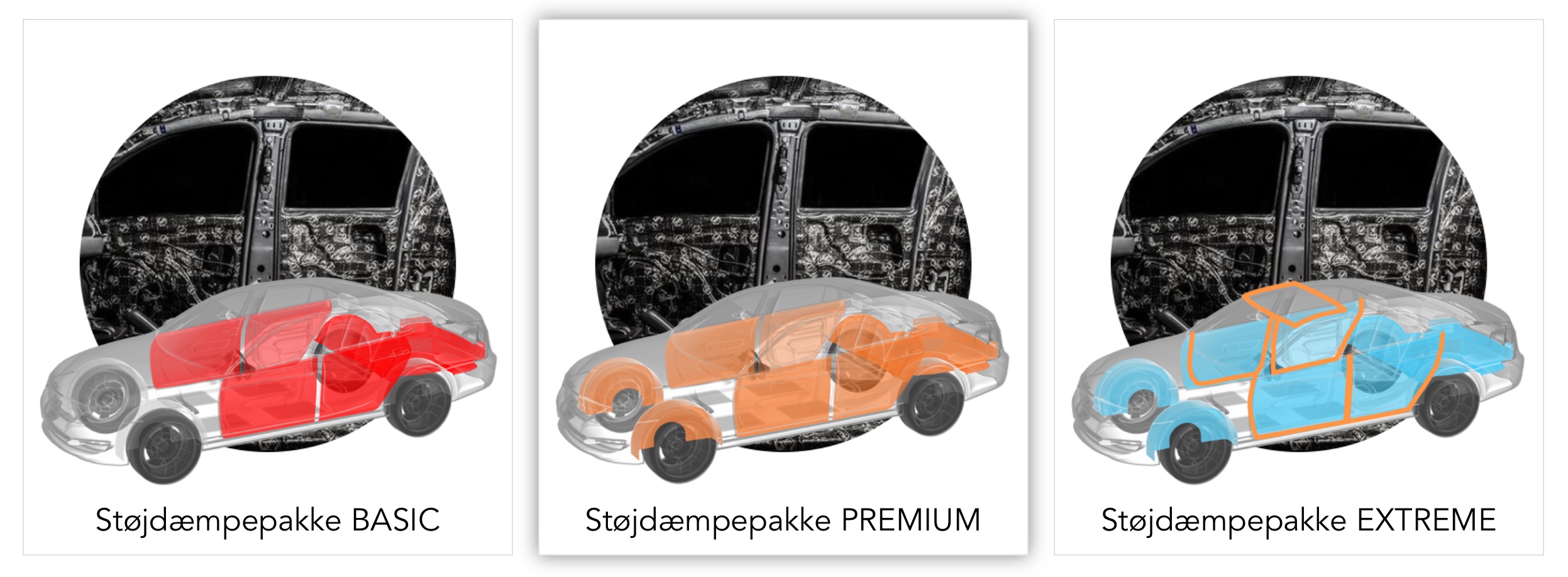
So, I made the move and contacted the company, explaining why I was curious as to what could be done, mentioning the very quiet Volvo S40, and asking whether something like this would ruin the performance of the sound system. Lasse Rasmussen from CARSound replied:
“Unfortunately for you, that experience with the Volvo makes good sense. No matter how cool the Tesla Model 3 is, Volvo really has a good reputation for well-built and slightly ‘over engineered cars. We will do our best to limit the noise, but do not expect that we can remove everything. However, my colleague Alexander mentioned that he has experienced that the trunk ‘disappeared’ after the attenuation. We seek to attenuate the trunk vibrations in order to optimize the subwoofer reproduction, so on the contrary, if we remove the resonance in hollow compartments in general, the oscillations that can phase out your subwoofer will disappear and thus you will achieve better conditions for your subwoofer.”
I was sold on the idea. I got a quote of DKK 9,000 ($1,461) all included (all materials and 2 people working on the car for 8 hours), and in the month or so leading up the treatment, I really tried to pay attention to all acoustic aspects of driving the Model 3: rumbling, whistling, rattling, music quality, speaking with passengers in front and back, etc. As well as doing some unscientific decibel measurements.
Arriving at the CARSound shop on a wet and cold Monday morning, I was welcomed by Alexander Nørgaard, who explained to me what was going to happen. I had ordered the premium package consisting of damping the trunk, front wheel arches, and all 4 doors. After removing the cladding of the trunk, Alexander explained further: “There is some original sound damping materials in here to make sure the metal panels don’t vibrate too much, but we will be putting a lot more in here.”
Alexander taps on the panels from the inside at the floor and the rear wheel arches and the drumming sound is clearly resonating. I ask him about the sound system and how this will affect it. Alexander continues:
“The Model 3 has one of the best sound systems in a mass produced car. I drive the Model 3 Performance and I am very impressed. The work we will be doing on your car today will help bring out the system’s quality to its full extent. However, when this is done, you will even be able to upgrade this system’s quality with other drivers in subwoofer and mid-tone speakers up front.”
Alexander shows me the subwoofer speaker driver and I can see the cone is made of a paper fiber material, which is very normal, but this is where things can be optimized further. However, my hearing is not perfect after driving a dozen motorcycles over 3 decades, so I will save my money for the day I can buy a “tinnitus-canceling system.”
Before the work began, I walked around the car tapping on all the panels to make sure I knew how they sounded before the treatment. After Alexander put damping material on the inside of the right rear-wheel fender, I tapped it again, and sure enough, it went completely dead. A funny thing is that this reminded me of the 2nd-gen Nissan Leaf I drove a few years ago, which had the same dead sound to it. If you own one, go ahead and try.
So, why has Tesla not done more of this stuff from the beginning? Because of prioritizing other matters I guess. Tesla is busy figuring out how to put as many electric vehicles on the road as possible, and I guess every second of assembly work counts. Which is why I write this stuff for you — to prioritize your own level of comfort and find out what’s possible. The result? Let’s look at some pictures first and I will tell you what I think.

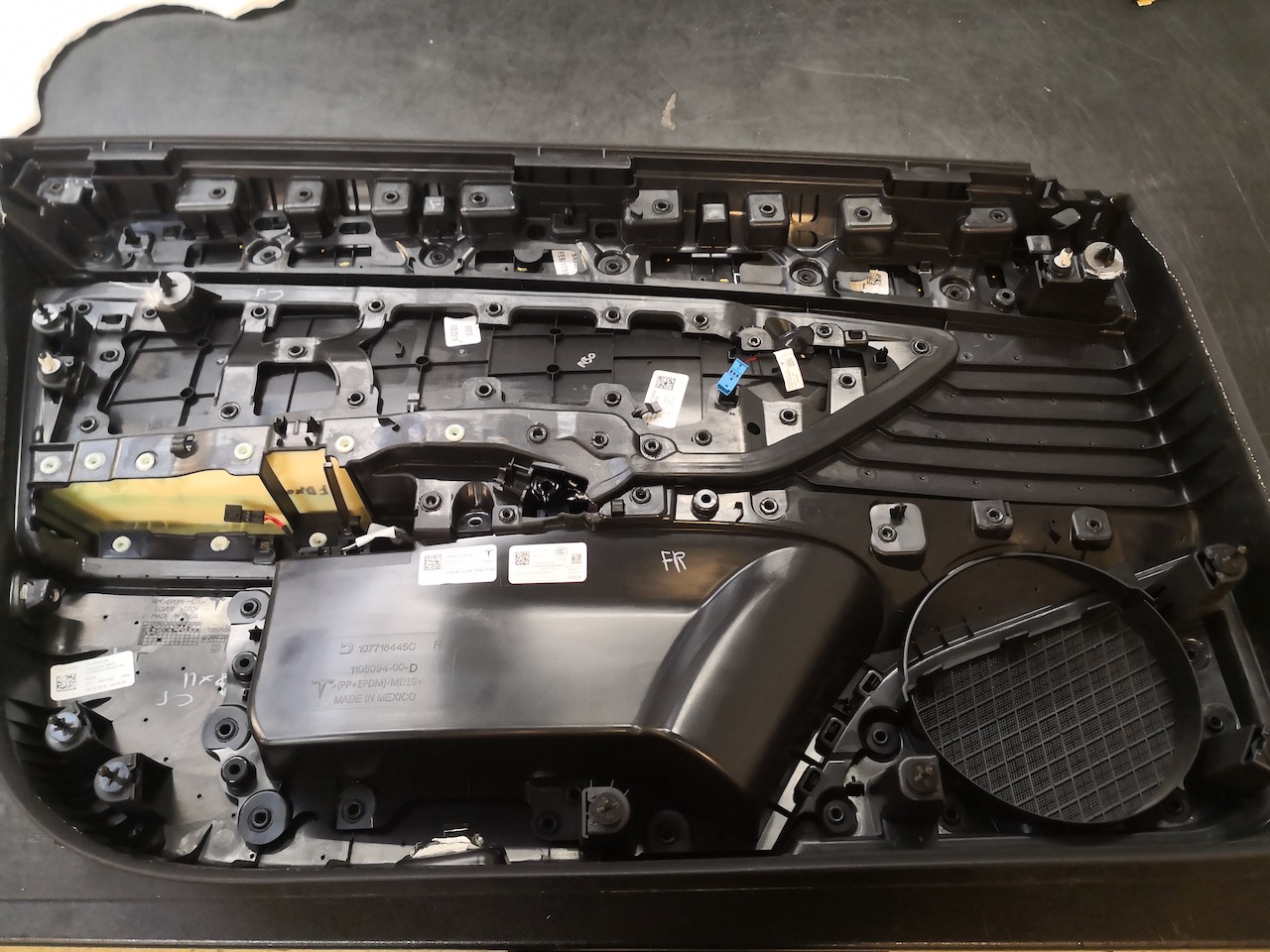
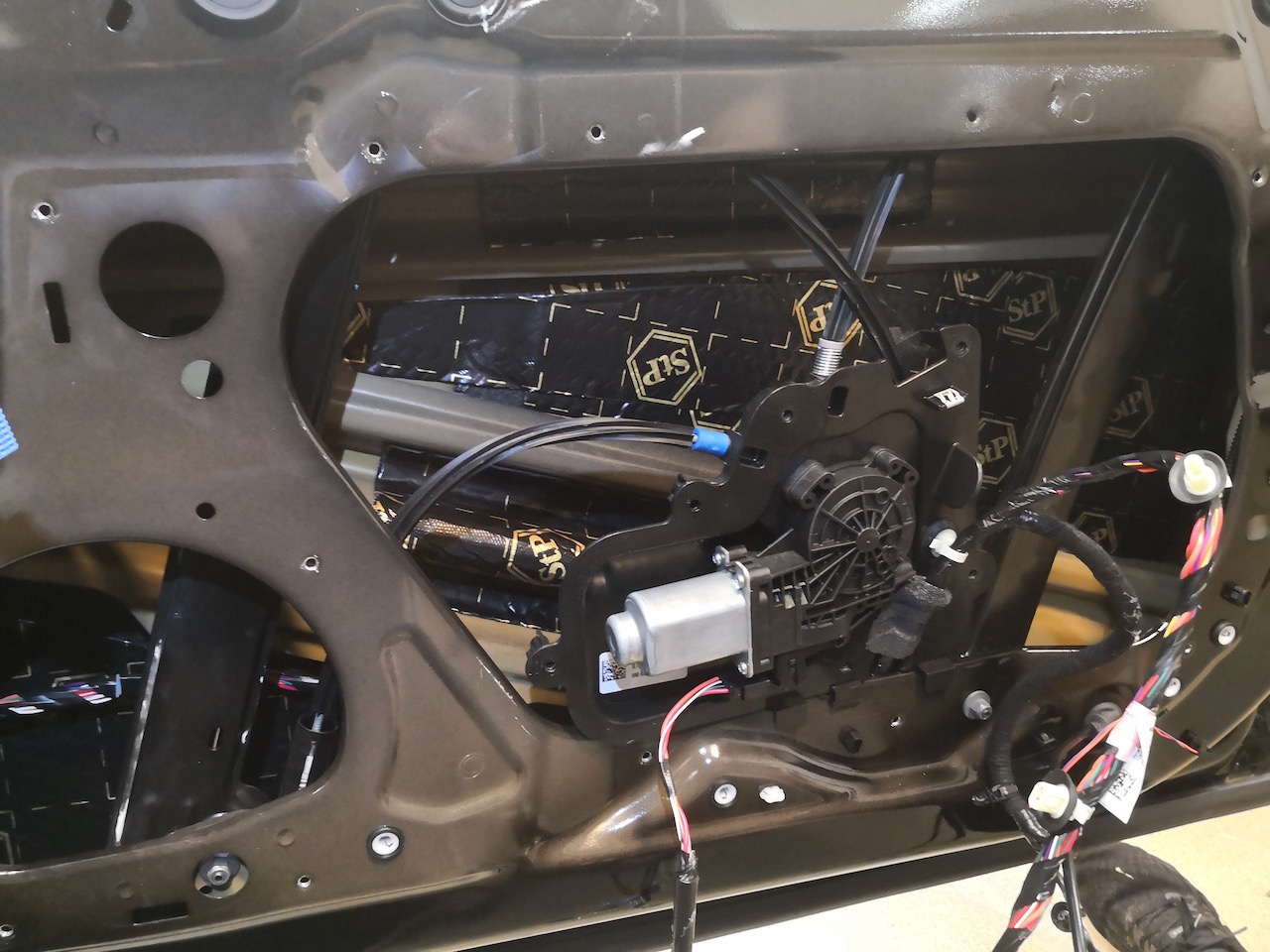

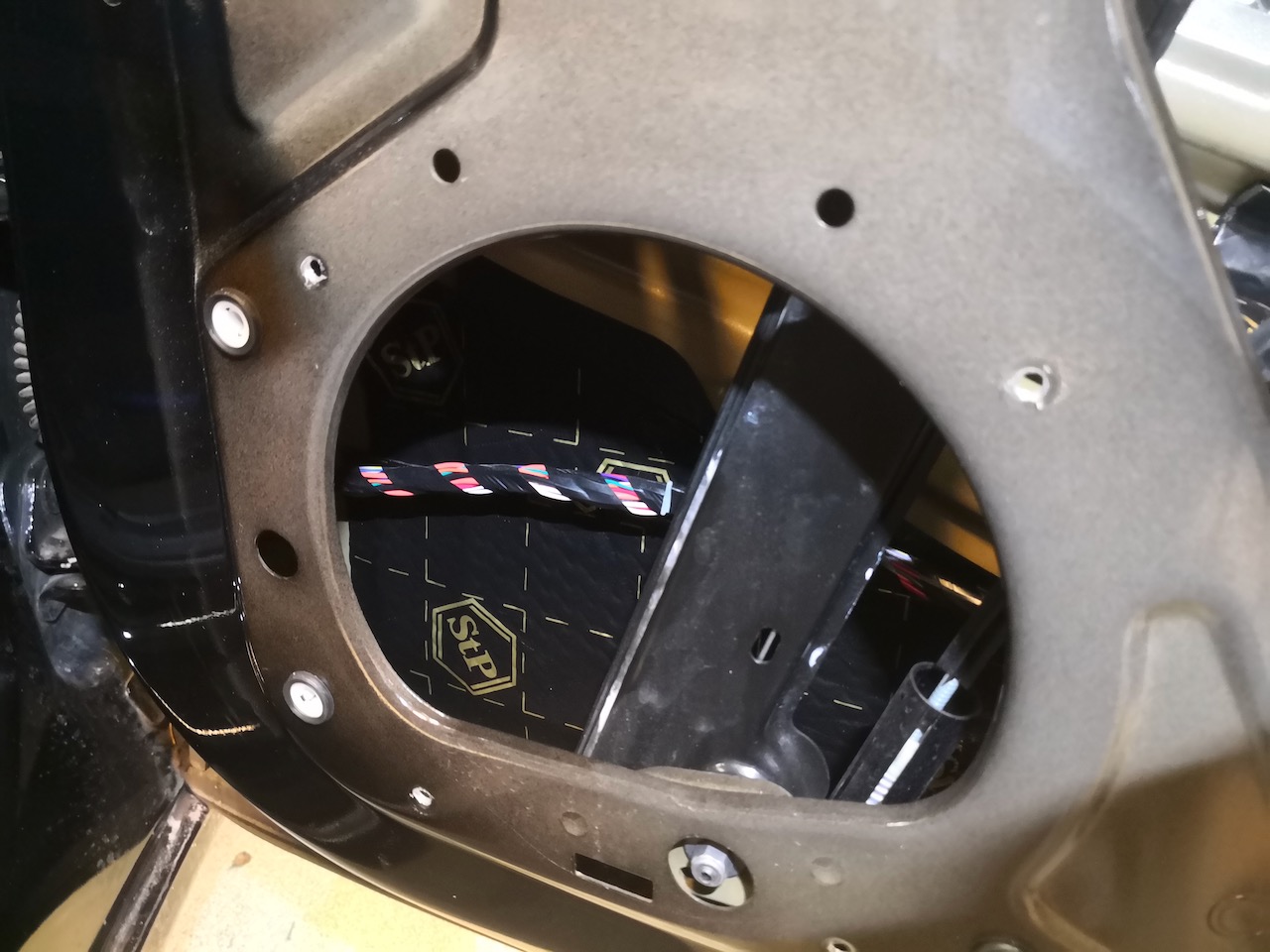
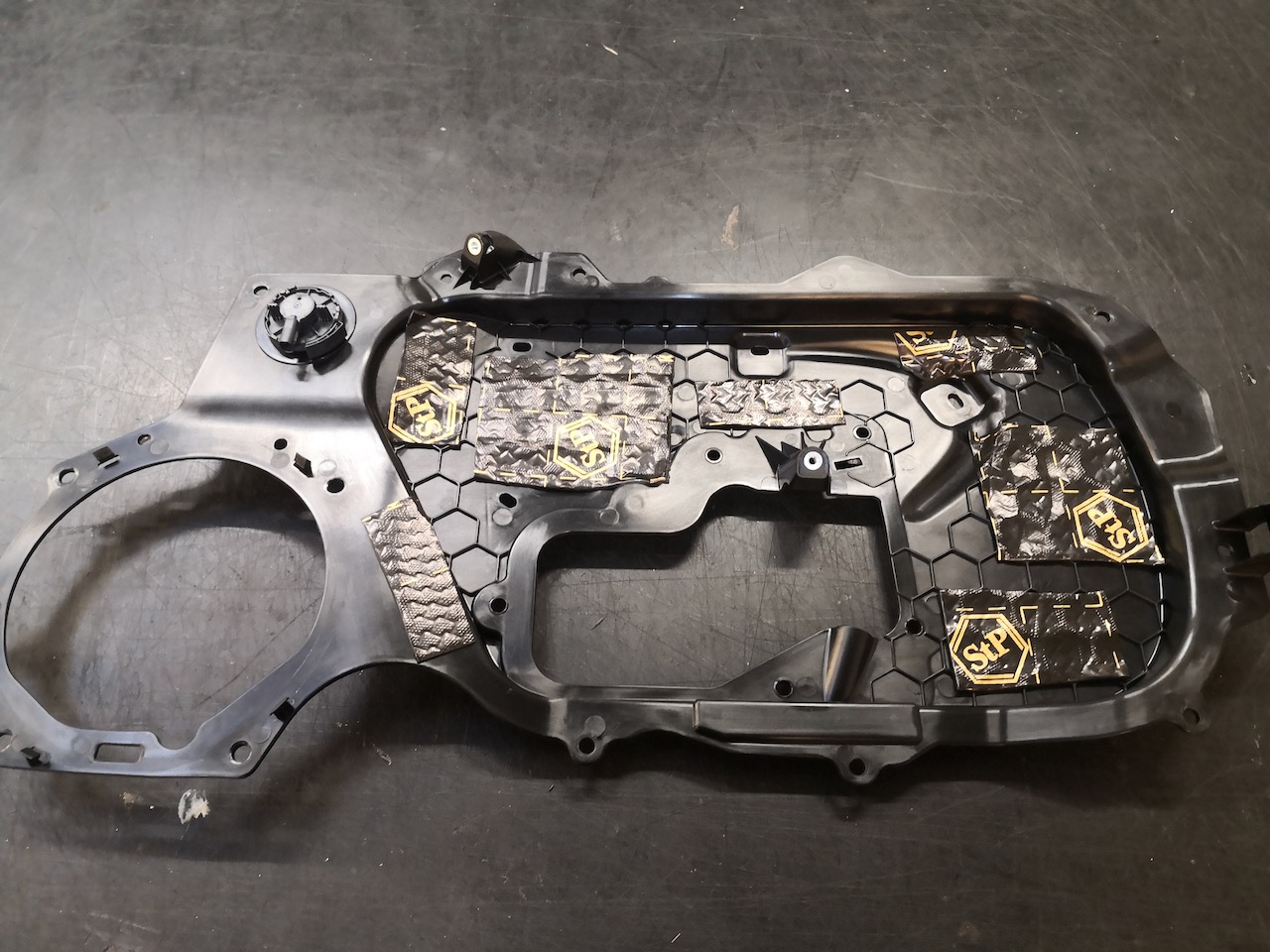



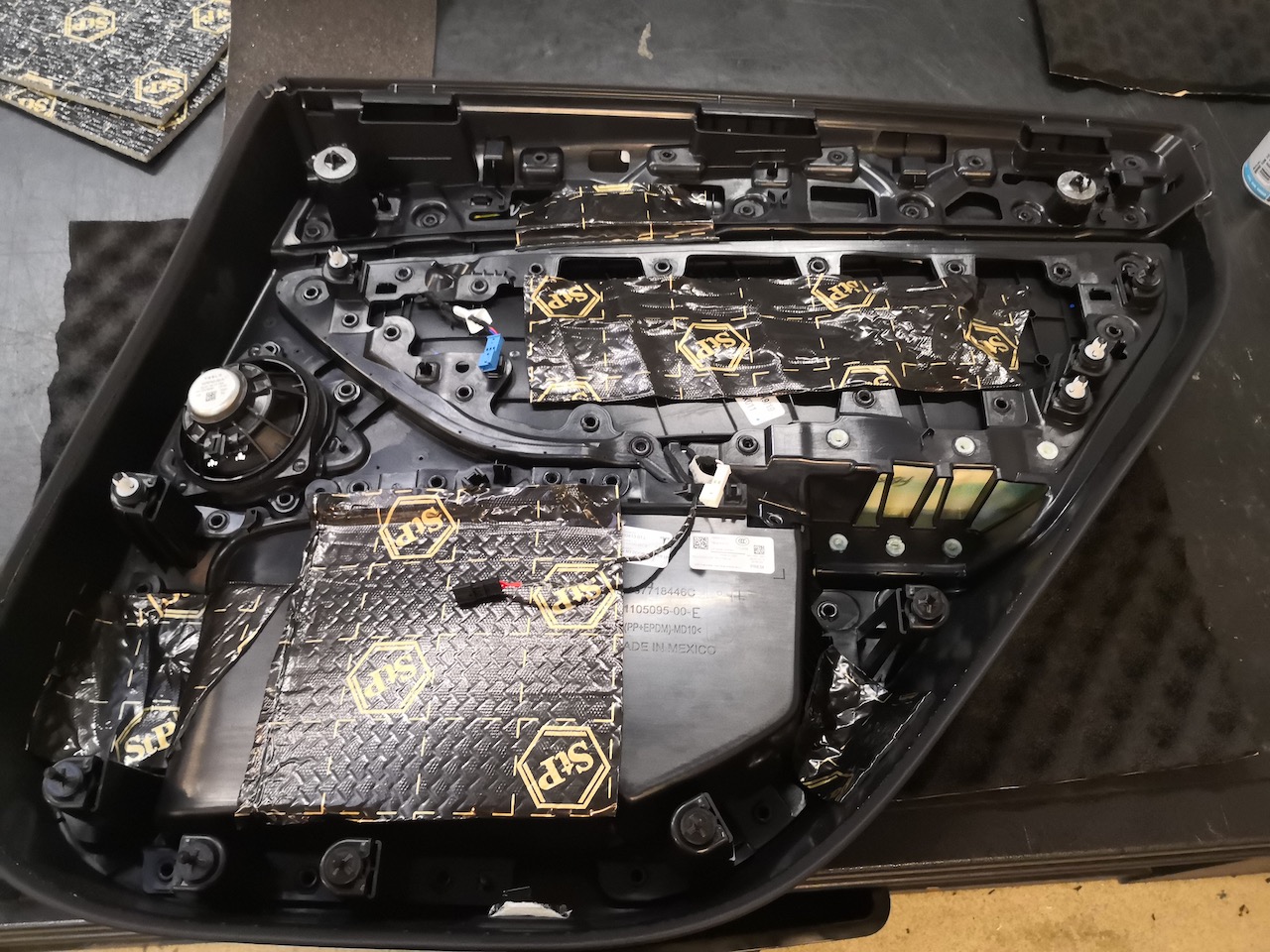


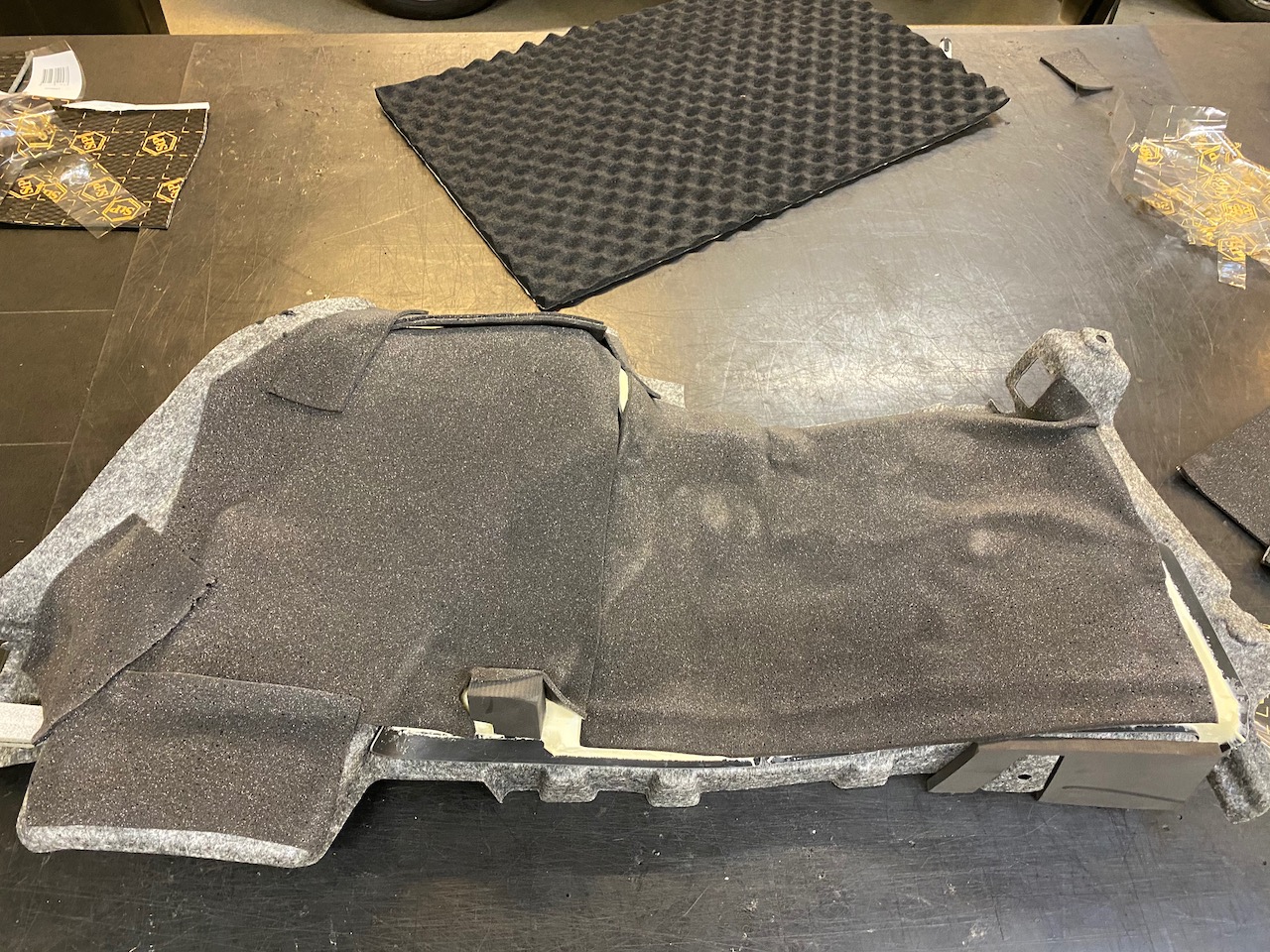




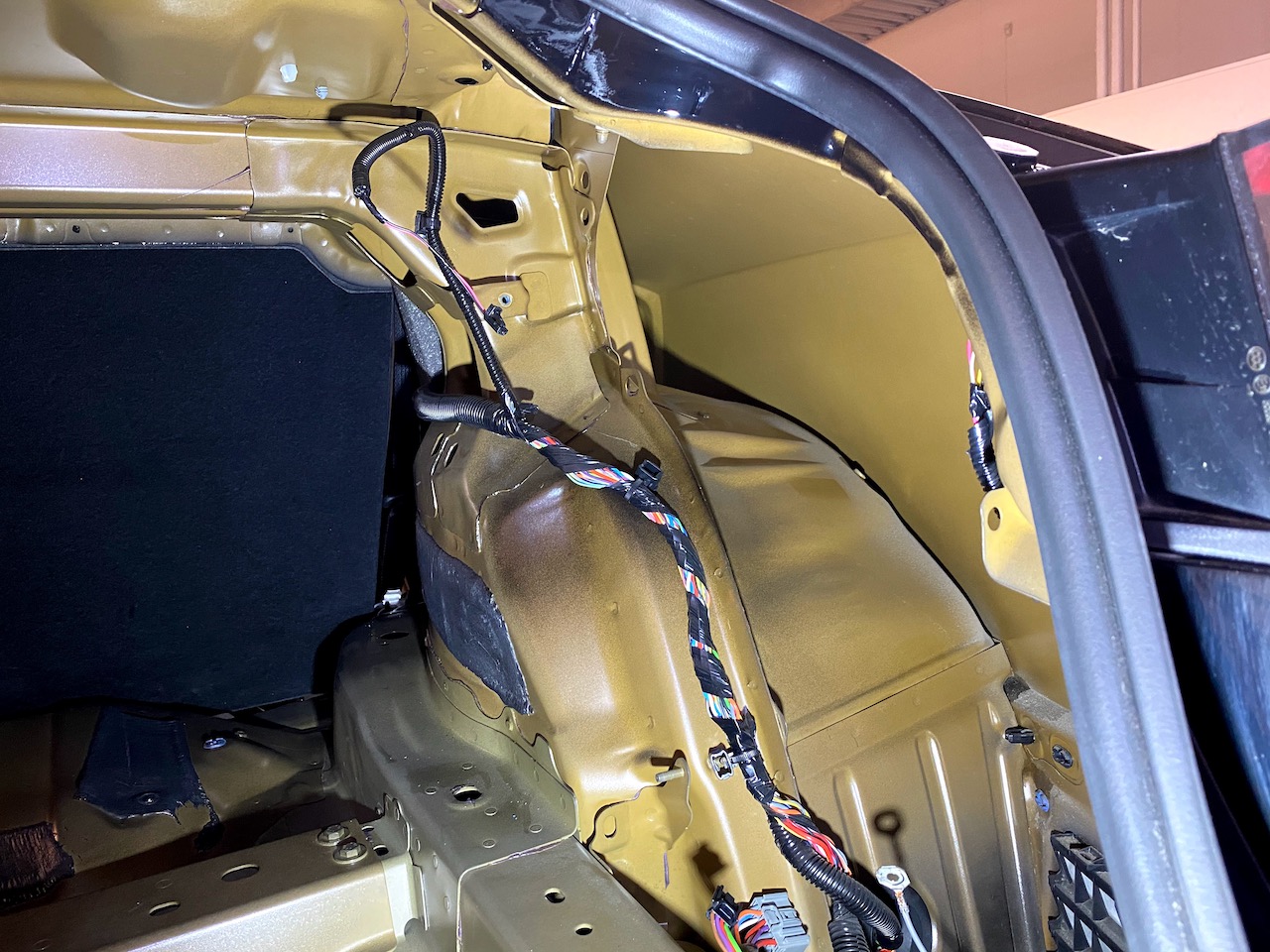


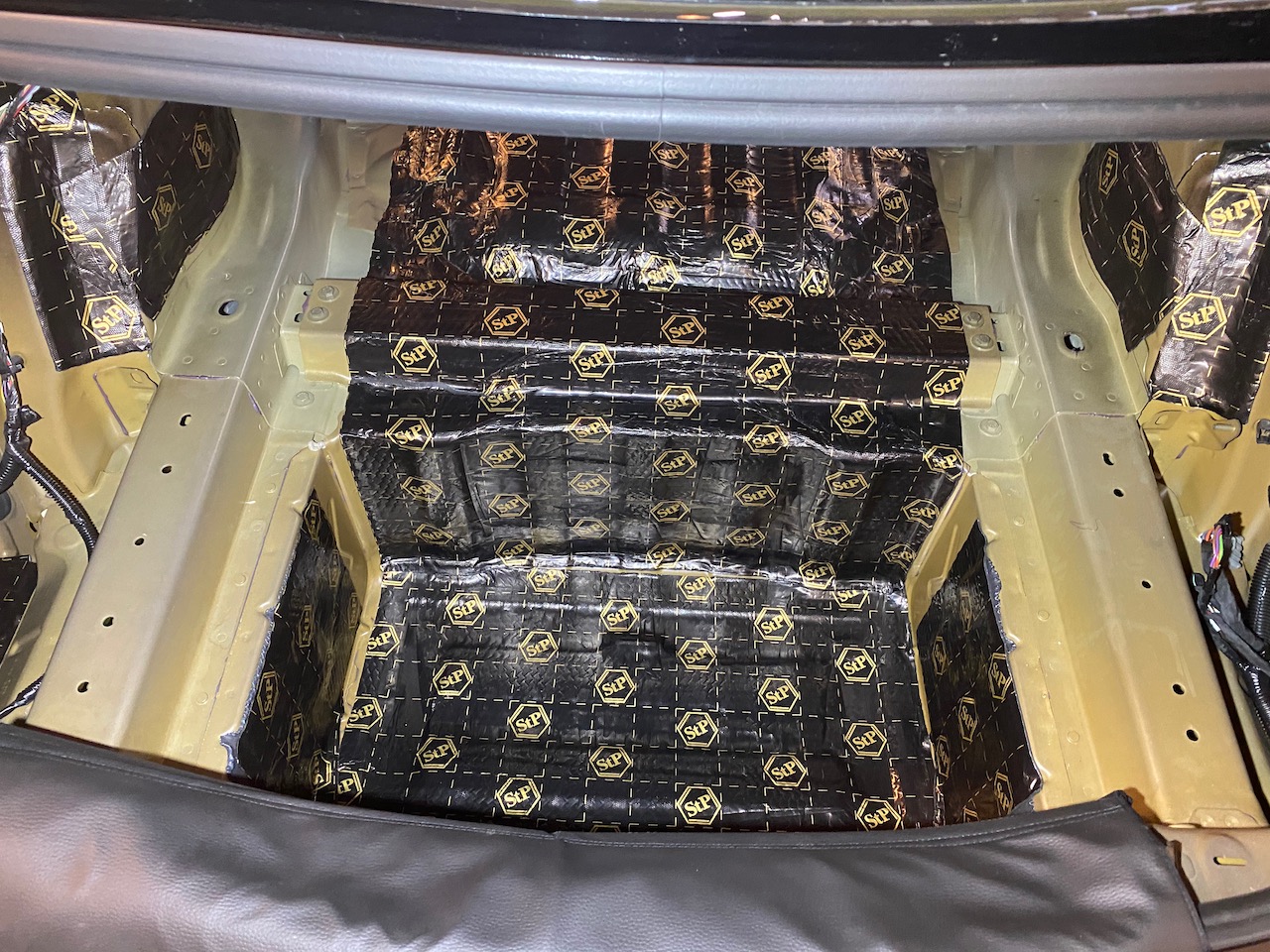


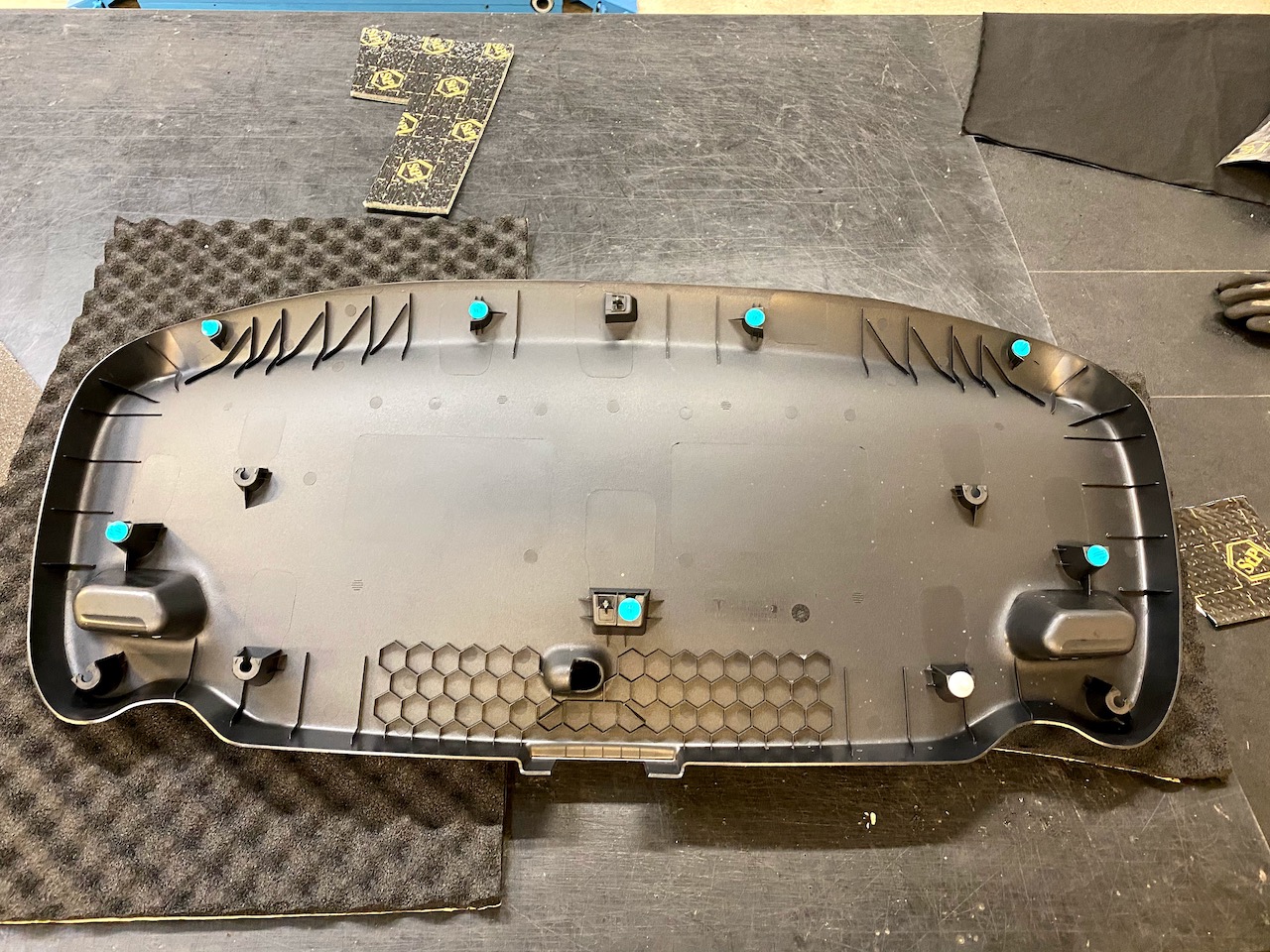
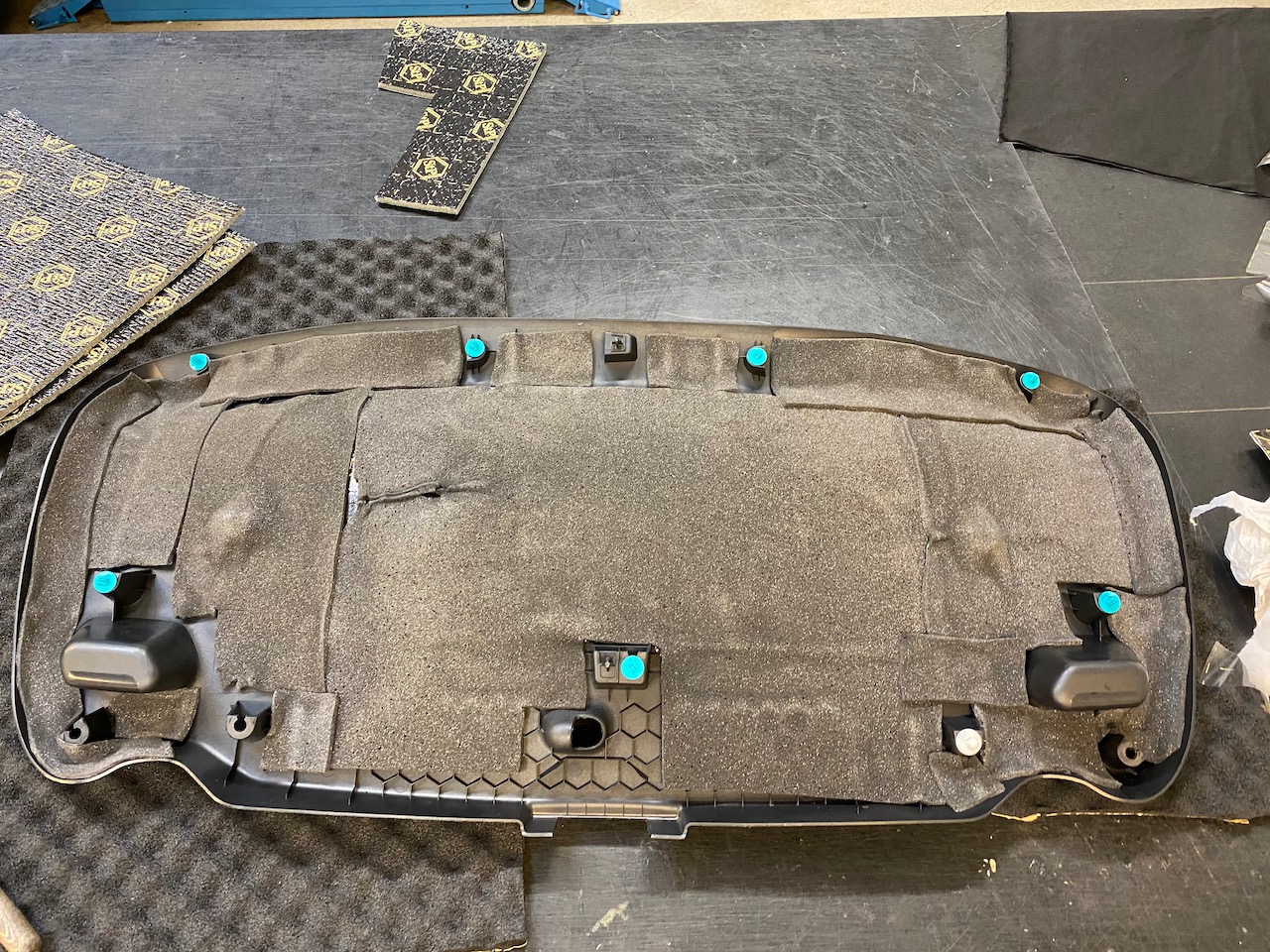


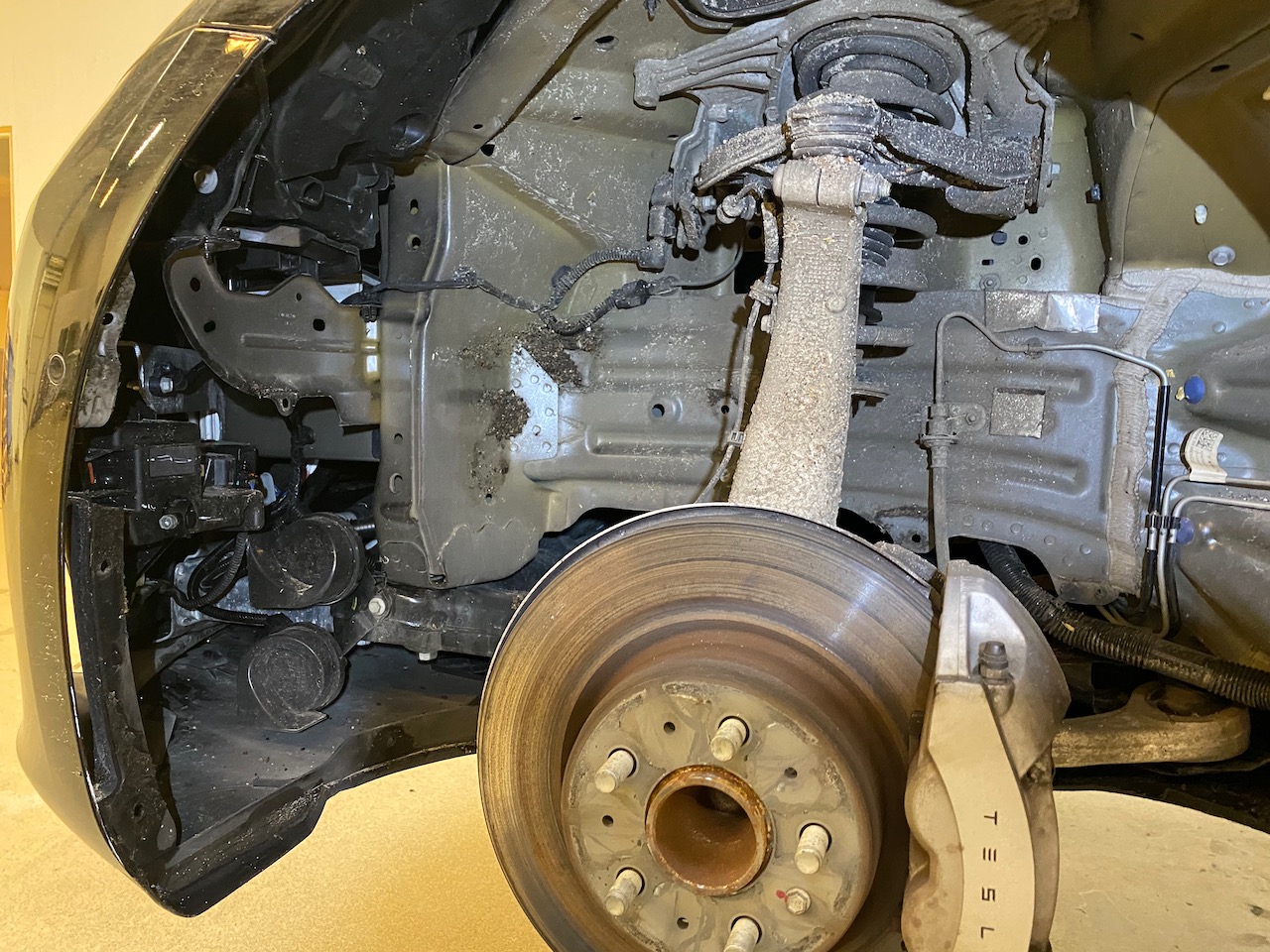

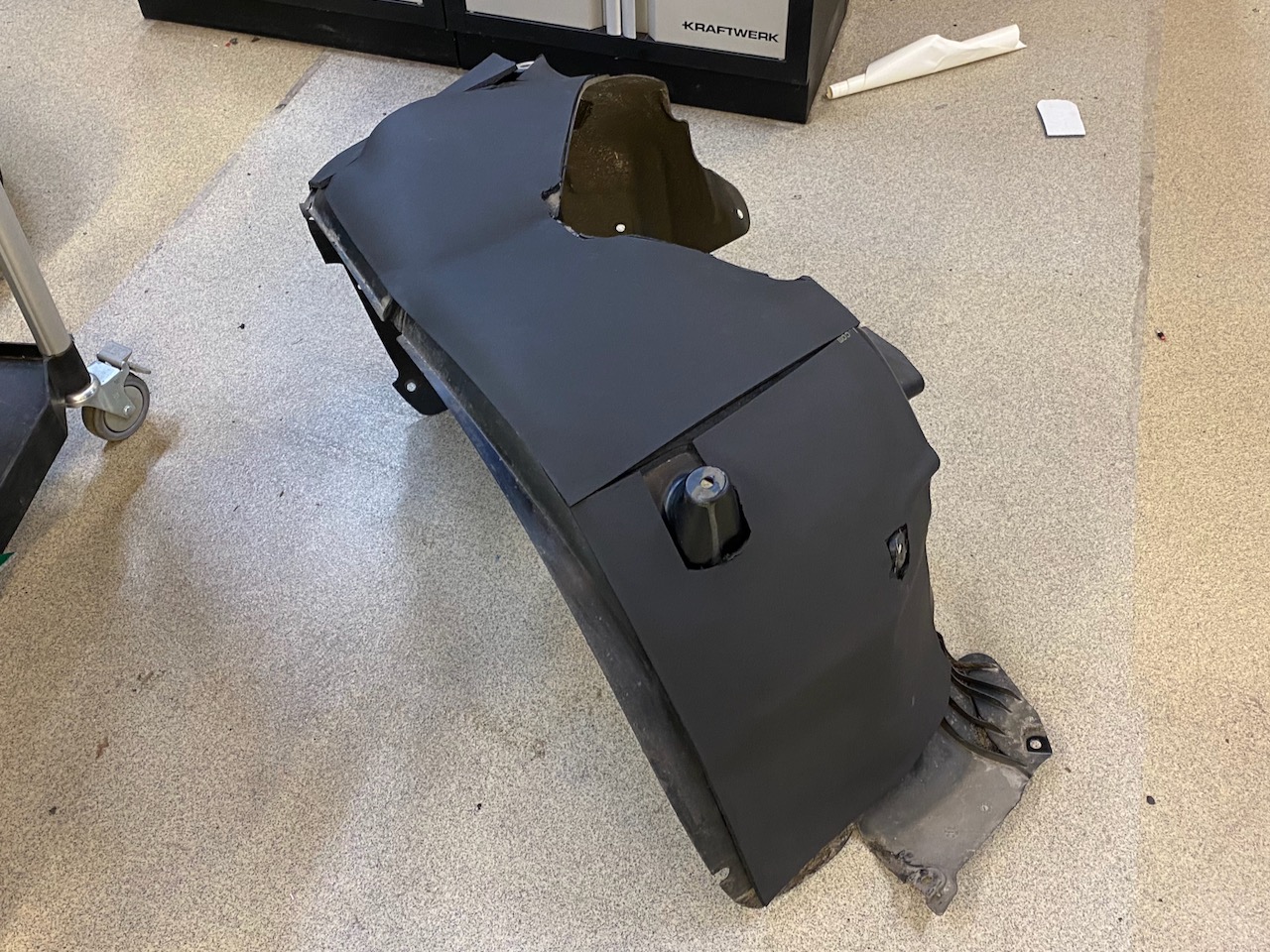
After a few days experiencing my “new car,” the first thing that’s important to say is this: Do not expect miracles. That being said, I don’t regret spending the money. However, had I planned to replace the car within a shorter period of time, then I would not have done it. The car does not go as quietly as an air suspension Model S.
This is the kind of expenditure that is lost on the spot. The resale value does not increase when you do something like this. But I intend to spend a lot of time inside this car, and the difference I subjectively experience is very much worth the expense.
The day I traveled to CARSound, the weather was consistently depressing, with continuous rain and just a couple of degrees centigrade, so I picked out a couple of spots along the way and had my phone measure the decibel sound level at those exact spots going out before the treatment and coming back after. These are the results:
100 km/h (62 mph): Before = 67 dB. After = 66 dB
110 km/h (68 mph): Before = 70 dB. After = 67 dB
130 km/h (81 mph): Before = 73 dB. After = 70 dB
My phone was placed in the holding place in the center console, which was in fact not ideal, because of vibrations inevitably propagating directly to it. It should of course have been placed on a dead foam material. I used a simple app for my phone called Decibel X, and I should of course have used the more expensive Decibel X Pro, which is packed with analyzing features. In the cheap version, I only get simple readouts and a crude graphical frequency average readout, but it shows that something definitely has changed in the higher frequencies:
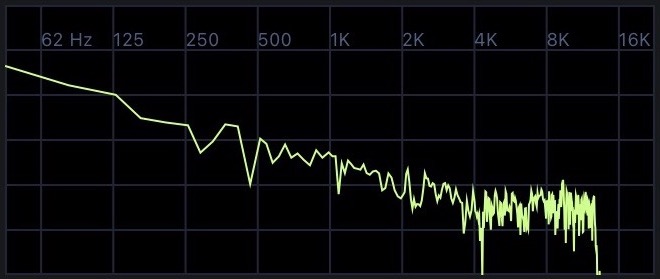
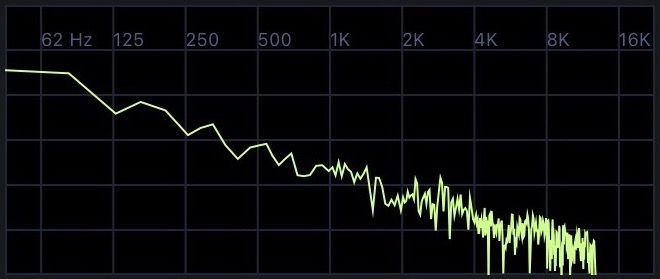
Below 100 km/h (62 mph), I am not able to ascertain any difference, but it feels different here too, as it does at all speeds. In general, I think the high-frequency band noises are substantially lowered. That kind of noise tends to be tiresome, and even though the low-key rumblings might still be almost the same, my conclusion is that this is probably the most you can do for your 1st-gen Model 3.
The wind noise is of course the same, and I sense the most noise is now coming from the front wheels. Also, I have found that I can hardly hear the rear drivetrain anymore. Before this soundproofing treatment, there was a clear sound during hard acceleration, and even at full regen deceleration, and these sounds are now substantially lower. I can’t claim that this is ultimately a good change, because that noise was in no way annoying, but in a weird way it adds to the sense of luxury.
On the slower drives in the countryside with the family, there is also the sense of a quieter interior after the treatment. Talking between back seat and front seat is less of a problem now, and, again, my hearing is not so good to begin with, so in this situation it makes a huge difference to me, but might not do so for someone with perfect hearing. Listening to music is still a bliss, it seems now even more so at higher speeds, but really, this is hard to conclude objectively, because this powerful sound system can overcome any noise. (Try Dire Straits Six Blade Knife at full blast, my goodness!)
Unexpected bonus: This being the Model 3 without the power liftgate, a welcome change is that it is now just heavy enough to ensure it latches itself when you let it go half way down. It used to alway miss the latch and either I had to push on top or slam it harder to begin with, making it sound like a giant tin can. Now it just thumps nicely into place. In fact, overall, the doors have a better feel to them with less rattling when you close them.
Would I recommend this treatment? Yes, if you are expecting to drive your Model 3 for a long time. No, if you’re not. By the way, I asked Tesla beforehand if this would void warranty, and I was told that as long as no physical changes were made to original structures, I was good to go.
All photos by CARSound. Disclaimer: I have not received any payment or extra rebate from CARSound for writing this article. On the day of arrival to have the work done on my car, I was granted permission to use their material.
Originally published on February 6, 2021. Updated March 12, 2024.
Have a tip for CleanTechnica? Want to advertise? Want to suggest a guest for our CleanTech Talk podcast? Contact us here.
Latest CleanTechnica.TV Video

CleanTechnica uses affiliate links. See our policy here.

